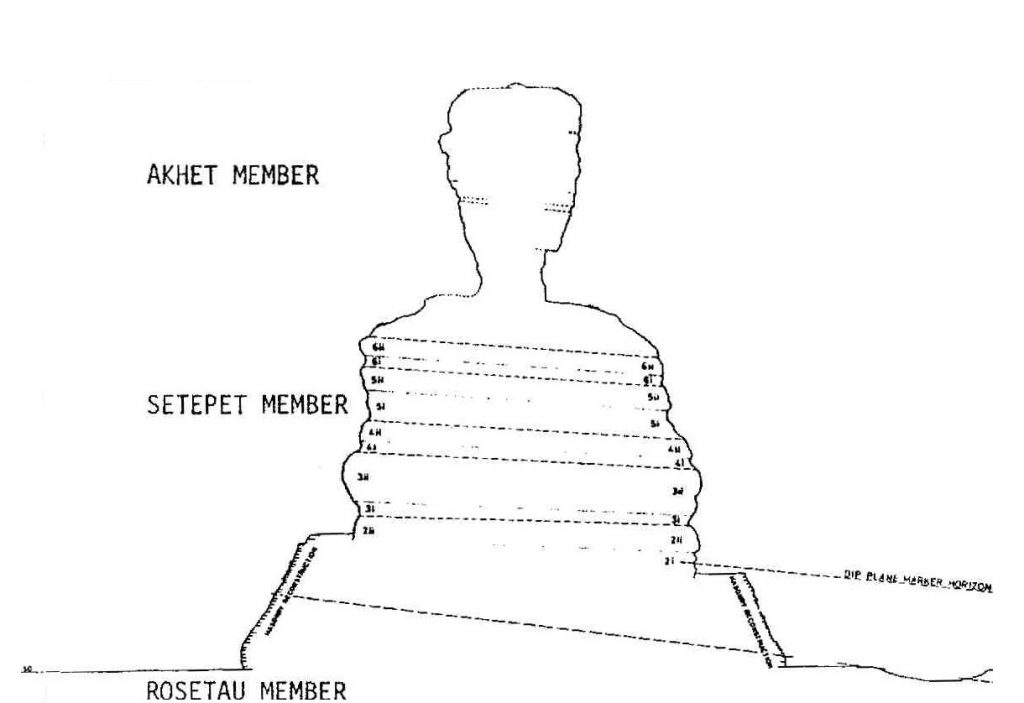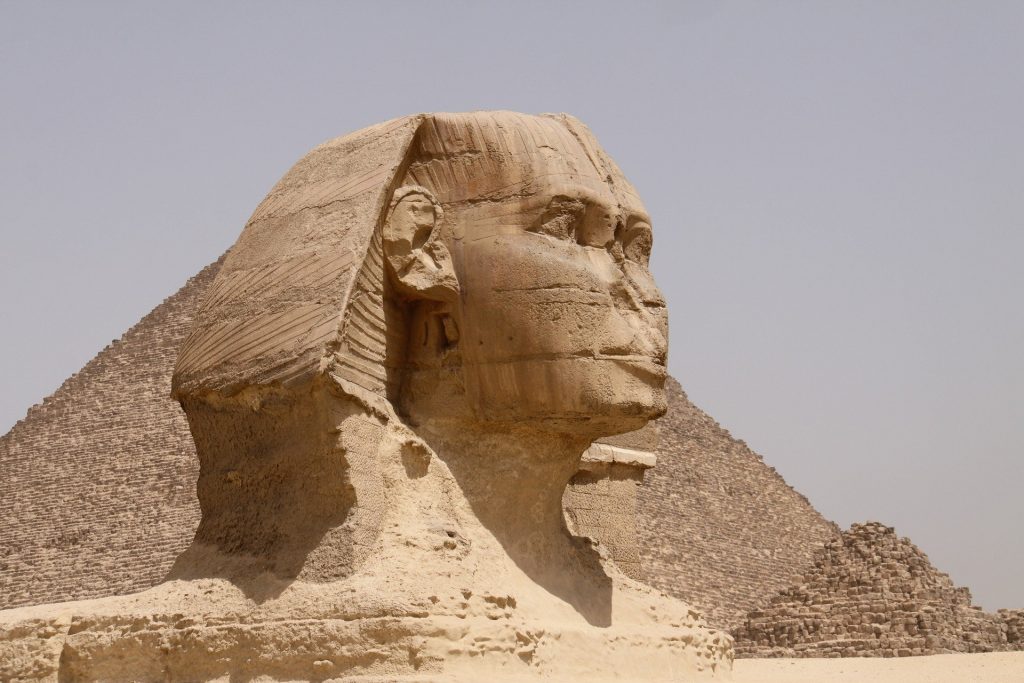Geologic Study of the Sphinx
Summary. The portion of the Mokattam Formation exposed at the Sphinx has been divided from bottom upwards into three members namely, the Rosetau Member, the Setepet Member and the Akhet Member. The Rosetau Member is a bioherm; the Setepet Member consists of six, rhythmically deposited beds and the Akhet Member is marly below and a rather pure limestone above from which the head of the Sphinx has been carved. A geological map of the Sphinx based on the recognition of these three members has been presented. Petrographically, these limestones are packed biomicrites with variable quantities of silt, clays and hematite and the evaporites halite and gypsum. Structurally, the strata dip southward as against the regional northwards dip of all tertiary strata in the Nile Valley. The joints trending orthogonally in a NE and NW direction cause dislodgment of large blocks of limestone of the Sphinx core.


